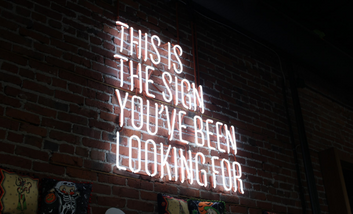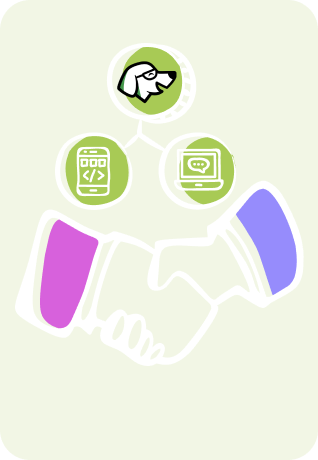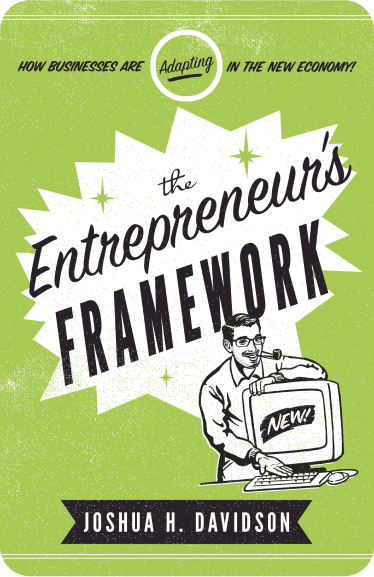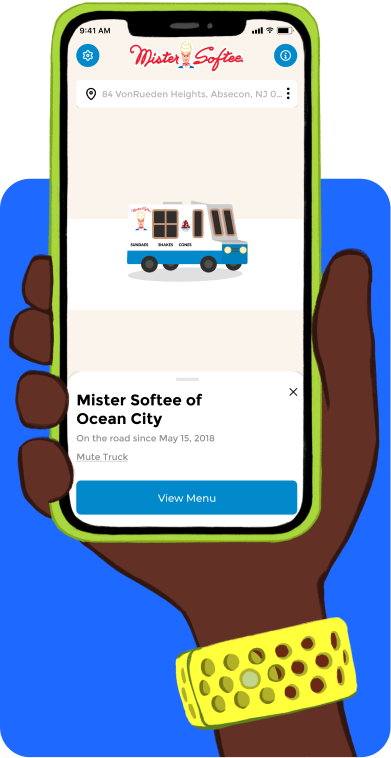Powerful brands are actually individuals with their own unique personalities.
If they weren’t, no one would be able to tell them apart from a line of products and services offering the same thing. This goes further than just relatability, tapping into our collective subconscious by mirroring our shared human needs.
It helps us as business operators and marketers to create consumer connections that are practically instinctual.
In 1954, Carl Jung described this phenomenon as ‘archetypes.’ These can be observed repeating across cultures and generations over the decades, helping to shape our collective human experience. From historical figures, celebrities and some of your favorite movies in Hollywood — to all across the literary pages, archetypes can be seen in our most beloved (and bemoaned) personas.
Archetypes are essentially the heart of a brand in the eyes of the consumer, conveying meaning that makes customers relate to them as if they actually were alive in some way.
We explore the importance of archetypal brand marketing in-depth in several other blog posts in this series. There is a lot to cover here!
In this post, we’ll explore the Magician archetype and its different sub-archetypes.
Let’s begin!
Brands Yearning to Leave Their Mark on the World
Liberation, power, and mastery: what do these three ideals have in common? A lasting legacy.
Magicians want to make dreams come true, bringing the future into the present.
With so much knowledge it is almost supernatural, magicians are transformative brands seeking to expand our collective consciousness.
An idea-driven powerhouse thriving on vision and intuition, they seem to make innovation and the brand itself a magical experience.
Examples of magician brands include Disney, Apple, and Tesla. In the tech space especially, many companies choose to weave this powerful archetype into their branding.
Crafting A World of Dreams and Endless Possibility: The Magician Archetype Family

The Magician archetype can be viewed from a few different angles, depending on which specific attributes are at play.
The Magician
Make magic happen. That’s the motto of the Magician. Charismatic, influential, and incredibly perceptive, the Magician turns dreams or ideas into reality for others.
The Magician seems to rely on forces beyond the natural to get results, and must beware not to fall into manipulation or trickery in the process.
Real-World Example: Disney The Most Magical Place on Earth
The Alchemist
With a combination of fact and intuition, these brands transmute one thing into something else entirely. The Alchemist values purity and perfection, wanting everything it touches to become pure gold.
The scientific and the spiritual come together to give this sub-archetype a belief that there are no limits. Nothing is impossible!…which may lead to the Alchemist’s area of weakness, if not careful — a temptation to engage in fraud.
Real-World Example: MAC Cosmetics All ages. All races. All sexes.
The Scientist
The Scientist is passionate and curious, wanting to see what things are made of, and uses that knowledge to be a change agent in the world.
One of the logical, left-brained sub-archetype in the Magician family, the Scientist has to “see it to believe it”. One thing it has to be careful of: missing the forest for the trees in its quest to dig deep into science and beyond.
Real-World Example: Genentech Everyday Epic
The Engineer
Using a structured approach to problem solving, the Engineer transforms creative energy into practical real-world applications.
Left-brained, logical and curious, the Engineer is the one to turn to for solutions to everyday problems.
Real-World Example: Dyson The vacuum that doesn’t lose suction
The Innovator
With a limitless ability to dream, these brands are an idea machine. With high intellect and curiosity, the Innovator thrives on change and is not afraid of taking risks to get to a solution.
Brands can be right or left-brained depending on their industry. Even though the Innovator has willpower and will perform in-depth research, this sub-archetype may be challenged to stay focused on the task at hand.
Real-World Example: IBM THINK
Marketing for Magician Brands
When it comes to the Magician archetype, marketing draws on the human desire for achieving mastery through power, and making the world a better place — at its best, leaving consumers enchanted and inspired to do the same.
Brand Messaging
- Same emphasis on aesthetics and innovation as Creators
- Expansive, imaginative brand voice
- Imaginings of the future and other inspiring imagery
- Detailed diagrams and symbols used in marketing assets
- Focuses dialogue towards individuals, not the group
Common Brand Colors
- Red: Love, Power, Excitement, Boldness, Youthful, Passion, Energy, Heat, Strength, Desire, Sensuality, Intensity, Speed
- Black/ Dark Gray: Class, Elegance, Formal, Protection, Security, Intelligence, Solid, Power, Mystery, Dominance, Authority, Sophisticated
- White: Goodness, Sincerity, Purity, Balance, Calm, Fresh, Cleanliness, Easy, Innocence, Light
From color palettes to typography and imagery, honing in on your brand’s ‘voice’ will both accent and inform all of your decisions when it comes to messaging and presentation.
The Evolution of Magician Brands

There are different levels to be achieved in a given archetype, depending on the strength of the displayed persona, and the brand’s evolution.
The general rule of thumb is, the higher level attained, the more success and wider net that can be cast to attract consumers.
Level 1: involves experiencing “magical moments” that leave one feeling mesmerized, or transformed in some way, though generally short-term or superficial.
Level 2: brings the experience of “flow” – a state of being in which you are fully immersed and “at one” with what you are doing. The mental, physical, and spiritual are all in sync working in perfect accord toward reaching the vision.
Level 3: can bring miracle discoveries or the complete manifestation of an incredible vision.
Is Your Brand A Magician?
If this post resonates with you and your company’s mission and values, it’s entirely possible!
Many brands possess archetypal qualities within their messaging that they’re often entirely unaware of.
This is because brand storytelling is far from a new art form, but it is more and more essential to achieve success in a highly competitive marketplace.
So, learn it. Know where your brand falls in this spectrum. And use it to establish marketing guidelines and company operations at a cultural level.
To start, ask yourself these questions:
- Which archetype do your competitors most resemble?
- Which archetypes would resonate most with your ideal customer?
- What drives them (customers and competitors)?
- How can your brand do things differently from your competitors?
- What role does your brand play in customers’ lives?
Then, look within:
- What is your team culture like? (their personalities, interests, etc.)
- What motivates team members to come in for work?
- What are your company values?
These are all important things to consider. However, keep in mind there are many archetypes and sub-archetypes which can be used to guide your marketing.
If the Magician doesn’t make sense for your brand, dig deeper and take a look at the other posts exploring archetypes on our blog!
Why Archetypes?
Depending on the product you offer and the niche your business occupies, crafting a strong brand might not be necessary. However, if you are in a creative or highly oversaturated industry, or you want to utilize social media marketing to build your customer base, branding is key.
When it comes to building a brand, many entrepreneurs have absolutely no idea where to start. Without developing the clarity that comes from a strong foundation, it is actually impossible to build an effective brand.
Think about it. A lot more goes into branding than most people realize:
– Logo
– Colors across channels
– The copy used in all internal and external materials
– All visual elements
– How your employees interact with customers and clients
– The aesthetics of your products
Without a strong foundation, making all of these decisions on a day-to-day basis becomes difficult. Especially if you have a large team, without any guiding principals, all of them will do whatever they think is best at any given time.
Whether they are writing your company tweets, designing your products, or actively engaging with customers, you can’t have them all just guessing at what your company identity is every day.
This will ruin any chance of you having a cohesive brand with a strong identity that consumers can understand and relate to.
Final Thoughts
If you are feeling overwhelmed at the start of your branding journey, these archetypes can help provide a foundation to work from. They can provide a solid anchor in a vast ocean of ideas.
As you can see here, they often imply a color palette, as well as a certain kind of voice. For example, a jester brand and a magician brand would look very different and speak to their audiences in very different ways.
In fact, you likely already have some rough ideas of how these different brands would interact with the world.
For example, while the jester would connect with its audience through laughter and subversion, the Magician may appear more like a sage or mentor.
They connect with people who seek knowledge and elevation. This means that they will sound very different and genuinely offer something different to the world.
Can you name any Magician brands? Comment below.
Since 2009, we have helped create 350+ next-generation apps for startups, Fortune 500s, growing businesses, and non-profits from around the globe. Think Partner, Not Agency.
Find us on social at #MakeItApp’n®

















